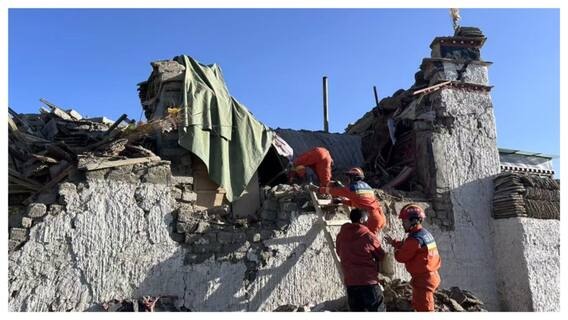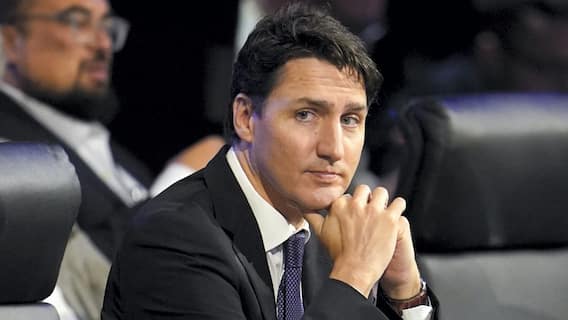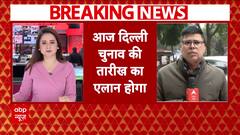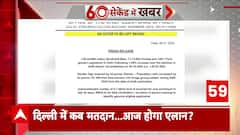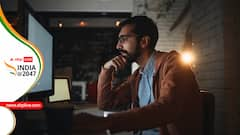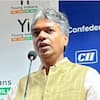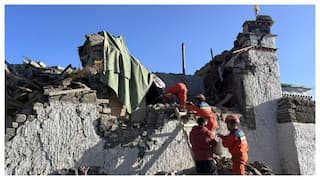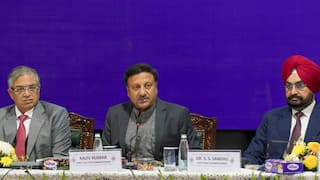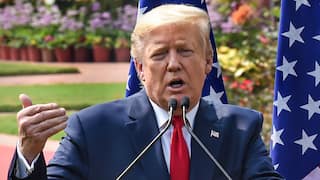En Route Urbanisation: Nexus Between Infrastructure And Environment Key For India's Economic Growth
Urbanisation in India has proceeded as it has elsewhere in the world as a part and product of economic change. Occupational shift from agriculture to urban-based industry is one part of the change

India’s urbanisation is growing at a rapid pace. We often think massive urbanisation acts as a growth driver for economic development of any country. However, there is no simple linear relationship between urbanisation and economic growth, or between city size and productivity. Experts have said the potential of urbanisation to promote growth is likely to depend on how conducive the infrastructure and institutional settings are.
At present, about a third of the total India’s population lives in cities. The trend shows an increase of urbanisation by nearly 4 per cent in the last decade, which means people have moved away from rural regions to find work and make a living in the cities. A report cited that India in 2011 added more people to its cities than to rural areas, for the first time since 1947. More than 90 lakhs were added to urban India every year, between 2001 and 2011.
The seven largest cities in the country will become even bigger until 2030. Prospects suggest that the population growth in Delhi, India’s capital, will increase about one third within the next decade up to 3.89 crore people.
What is urbanisation?
In simple terms, urbanisation is the rise in the proportion of people living in towns and cities. Several reports suggested that urbanisation first occurred in high-income countries (HICs) during the industrial revolution. Rural people were attracted to urban areas from villages to work in factories. They were also pushed as developments in technology led to mechanisation on farms. Situation in India was no different either. Urbanisation in India is neither unique nor exclusive but is similar to a world-wide culture.
India’s path to urbanisation
Urbanisation in India has proceeded as it has elsewhere in the world as a part and product of economic change. Occupational shift from agrarian sector to urban-based industry and services is one part of the change.
A report showed that increased agricultural performance has also promoted urbanisation as noticed in several top rice and wheat producing districts in India. To cite some examples, in the districts of Chengalpet, Krishna, Burdwan, Ludhiana or Kurukshetra, the percentage of urban population is seen to be higher than the state average.
Urbanisation and growth prospect
Urbanisation is intrinsic to development and often serves as a major driver of economic growth, as stated by NITI Aayog in a report.
Considering the projected trend of urbanisation, the multiple challenges being faced in the cities and India’s commitments towards global agendas, NITI in October 2020 had constituted an advisory committee on ‘Reforms in Urban Planning Education in India’.
Snapshot of urbanisation
- India is the second-largest urban system in the world with about 11 per cent of the total global urban population living in Indian cities.
- In absolute numbers, the urban population in India is more than highly urbanised countries/regions across the globe.
- The country has reached a turning point in its journey of its economic transformation wherein half of the country would be ‘urban’ in a few decades.
- Urban growth is expected to contribute to 73 per cent of the total population increase by 2036.
The role of urbanisation
The Economic Advisory Council to Prime Minister (EAC-PM), which has released 'Competitiveness Roadmap for India@100', stated urbanisation is a crucial aspect of economic development and economic geography.
Urban areas have to be shown as key sources of economic performance and dynamism. For India, the relatively low speed of urbanisation is one of the country’s unique features. India registers relatively modest internal migration flows, and a large share of these flows is within individual states. One possible explanation is the social structure of the country, where individuals are highly embedded in their caste and local community and thus less likely to move.
Slow urbanisation matters because the economic structures of largely urban vs largely rural districts differ in significant ways. Dominantly urban districts account for more than 55 per cent of all wages paid in India, about 45 per cent of all jobs, but only about 30 per cent of all districts. Typical urban districts are considerably larger in terms of employment and have significantly higher wages. Urban districts stand out for their much larger focus on traded clusters: they account for 50 per cent of payroll in these districts, compared to 25 per cent in rural districts.
In two-thirds of all traded cluster categories, urban districts account for more than 65 per cent of all employment. Within traded clusters, urban districts achieve higher wages within individual cluster categories and are more focused on cluster categories that tend to pay higher wages, like IT. The higher level of economic activity thus generated also pulls up local wages in urban districts. On average, traded wages are in urban districts about 17 per cent higher than local wages. In rural districts, they are at roughly the same level.
Skill intensity is often seen as one of the key differences between rural and urban districts. Indeed, rural districts have, on an average, a significantly lower skill intensity than their urban peers. But this difference is almost entirely driven by cluster-mix: Urban districts are more specialised in skill-intensive traded clusters. For given cluster categories, the differences in skill intensity are small. Labour market structures, too, are often seen through the rural-urban lens. However, labour mobilisation rates are almost identical across these two groups.
Unemployment is somewhat higher in urban than in rural districts. The real differences are in the type of employment relationship for those that are in active employment: In rural regions, self-employment (50 per cent of rural employees) and causal workers (30 per cent) dominate, while urban districts are dominated by regular salaried employment (50 per cent of urban employees).
It is tempting to view the urban-rural divide as the key dimension to understanding the significant heterogeneity of economic outcomes across India. But this would be a mistake. While this divide clearly matters, there is large heterogeneity within the groups of urban and rural districts. There are both urban and rural districts in all three of the groups of districts defined by their prosperity (here measured by average wage).
The most prosperous rural districts have agricultural activities that pay more than three times the national average agricultural wage. In their case, it is agriculture that is the engine of the location’s economy, pushing up local industry wages.
Urbanisation in states
Maharashtra has an urban population percentage of 42 per cent (4.1 crore), Gujarat with 37 per cent (1.9 crore), and Tamil Nadu with 44 per cent (2.7 crore) and the least urbanised state, Assam, with 13 per cent in 2001 indicate this inter-regional variation. In 2021, Maharashtra (50.45 per cent), Gujarat (44.45 per cent), Tamil Nadu (42.54 per cent), Karnataka (41.12 per cent), and Andhra Pradesh (39.13 per cent) will be the most urbanised states in that order.
Perils of urbanisation
Over the years, cities have expanded and become burdened by the stresses and strains of unplanned urbanisation, the brunt of which is faced by the poor and the marginalised, the biodiversity and the economy. In fact, Covid-19 revealed the dire need for planning and management of our cities, with an emphasis on the health of citizens.
Issues like lack of availability of serviced land, traffic congestion, pressure on basic infrastructure, extreme air pollution, urban flooding, water scarcity and droughts are not merely a reflection of infrastructural shortcomings in the cities. These issues indicate a deep and substantial lack of adequate urban planning and governance frameworks.
As a consequence, the urban environment, particularly in large cities, is deteriorating very rapidly. All Indian cities have severe shortage of water supply, sewerage, developed land, housing, transportation, and other facilities.
The level, quality and distribution of services have been very poor. Several studies have indicated large segments of urban population do not have access to drinking water, sanitation, basic health services and education. These deficiencies have serious health impacts particularly affecting the urban poor.
Deteriorating infrastructure, weak municipal institutions and poor delivery systems have constrained the urban economy and its ability to generate employment, incomes and services for the poor. The impact of urbanisation may be considered in the context of urban infrastructure services comprising water supply, sanitation and solid waste management, land and urban environment.
Over the past few years, a lot of efforts have been made by the Centre and the state governments in the urban sector. However, urban planning, which is the foundation for the integrated development of cities, citizens, and the environment, has not received adequate attention. One of such prime examples is the recent floods in Bengaluru.
Bengaluru floods
According to some experts and activists, people are only bothered about the city being flooded because it affects the productivity of the IT sector. Bengaluru’s infrastructure cannot support the rate of development. The area’s storm water drains are overworked as a result of the combination of precipitation and sewage.
Another report mentioned that the city corporation hasn’t bothered to connect the villages with Bengaluru's sewage infrastructure. There are no culverts along this stretch of ORR, rainwater and sewage water are forced to build up, causing waterlogging. The highway acts as a dam for the water. To sum up, indiscriminate urbanisation in the name of development is causing harm to the people and its economy. India, which very recently was touted as the fifth-largest economy in the world, needs a controlled approach in its development that will strike a balance between urban and rural areas.
Trending News
Top Headlines







